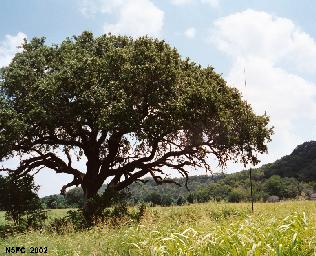N5ESE's Notes on the DK9SQ Telescoping Mast

click on the picture to view larger image

|
Quick Note: The DK9SQ Telescoping Fiberglass Mast, as far as I can see, is no longer available. But there are lots of FG Mast manufacturers out there, with equivalent or near-equivalent masts. Try: MFJ Enterprises (search on "telescoping") Sotabeams (UK) (look for antenna supports) Max-Gain (look for push-up masts) |
There are endless discussions among hams about the factors that affect antenna performance. These factors become acutely obvious when, like me, one operates QRP and portable. The old rules of thumb about antennas still hold true: to increase your radiated RF: 1. put up more wire, and 2. put it up higher. Given the same antenna (dipole, 1/4-wave wire, end-fed wire, loop), rule No 2 predominates.
For QRP portable operations, I've typically thrown a wire as high into a tree as I can, then worked that wire against a 1/4-wave counterpoise. Roger Clemens I ain't, and it often takes many iterations before I get the wire up where I want it. And even then, in central Texas, one may have to settle for a tree that is only 20 - 25 feet tall (if there are any trees around at all - HI HI)
Enter the DK9SQ Telescoping Mast. Designed by Walter Spieth, the mast is sold in the US by Kanga US. The mast, constructed of telescoping, graphite-reinforced fiberglas, was born for QRP ops. Weighing about 2-1/2 pounds, it collapses to just 46 inches in length. A threaded cap at the bottom, which is a little over 2 inches in diameter, captures the sections at the bottom, and can serve as a resting point when mounting. A tight-fitting rubber cap at the top of the first (outer) section serves to capture all sections for transport as a single compact unit. Together with the cloth carry bag (provided). the mast makes a coveniently transportable package, as can be seen here (sans the bag):

Extended, the mast is about 33 feet, bottom to tip. Begin extending by removing the top rubber cap, then pulling out the smallest (top) section first. As you extend each section, friction-mate it to the next (larger) section by pulling firmly and twisting slightly. Continue doing this until the mast is fully extended.
The mast is exceptionally rugged, and much stuffer than any fishing rod I've ever seen. The first (lower) six sections are reinforced at the mating point with a few layers of fiberglas tape (or something like it). I've measured each joint and section, and recorded the observed measurements -here-. These can be useful when fabricating rings or clamps to attach to the mast.
A typical minimal field installation would require some nylon cord to guy the mast. Enough for 3 guys would be the absolute minimum, though I prefer 4. Duct-tape or otherwise fasten the guys as high up as you can reach. Then tie them off to trees or nearby structures, or use tent pegs set at least as far out as the guys are tied high. With a telecoping mast, it might be good to tape the telescoping joints below the tie-off point, because the guys will likely apply downward forces at the joint, and wind vibrations may cause the joint to loosen. While this method is certainly easy, and requires few additional resources and weight, it may not hold up over extended periods or with gusting winds.
One fellow I know carries bungee cords, and attaches the mast to any available tree trunk or fence post, wrapping cord tightly at two or three places along the lower mast section. There may be some risk here also, if the bungees slip with vibration and wind. Mainly, this method means you have to find a way to route the wire antenna through the tree branches, and this can be quite a feat with some trees.
I've used both the above methods with shorter telescoping masts, and know them to be quite practical. However, when I bought my DK9SQ mast, I decided that I really wanted the flexibility of setting it up anywhere - in the middle of a field, on the beach, on a rocky, treeless hilltop, or on Enchanted Rock (a granite dome west of Austin).
A lightweight, free-standing frame was thus envisioned, and is presented in a separate page -here-
I selected the DK9SQ mast over a similar (and $20 cheaper) mast sold by MFJ Enterprises, the MFJ-1910, because it was said to be better reinforced and sturdier. What I did not anticipate as a side-effect of the composition, was the effect that the graphite might exert on the antenna. This became apparent when I first used the DK9SQ mast to support a vertical wire. I originally wrapped the 33 foot wire loosely around the mast, so that my "vertical" would not be flopping around in the wind. Big mistake. Turns out the black graphite (or whatever) in the fiberglas rod is quite RF absorbent. On 20 and 15 meters, I could see a 2-3 S-unit decrease in received signal strength with the wire wrapped around the pole. And I wasn't getting out well at all, getting S2 signal reports from my Elecraft K1. But angled away from the pole (with the wire unwrapped and about 3 feet offset at the bottom), everything was hunky-dorey. Now I'm suddenly getting S7 reports... much better. It took me about 2-1/2 hours to realize what was going on. So keep that in mind, when using the mast. This certainly wouldn't be an issue with a dipole or loop that stands away from the mast, nor should it normally be an issue with feedline.
73,
monty N5ESE